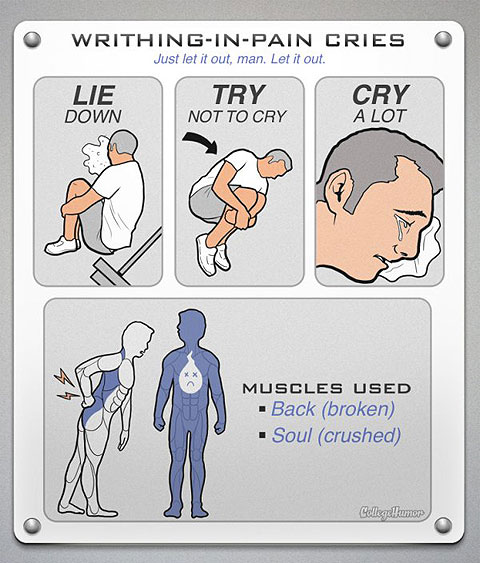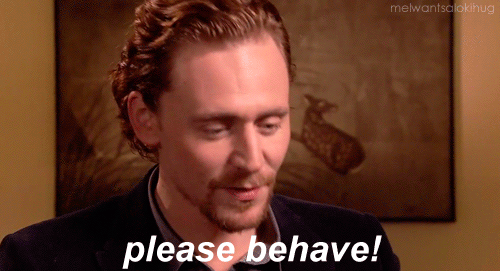Why hello there. When my friend Alexandra Haughton tagged me in The Writing Process Blog Hop of 2014 I was thrilled. I love reading about other writers work, and I'm glad to get the chance to share. With a GIF or two. Because that's how I roll. I. What am I working on right now?
All the projects. I'm working on all the projects right now. Or at least that's what it feels like compared to how I used to work.
When I started writing I had one full-length historical I dedicated all my energy to. Since then I've finished two other manuscripts (one is junk and will never see the light of day and one is a sports romance I love that is in the hands of my wonderful agent right now). Currently I'm working on a second, full-length sports romance, a novella for an indie anthology with Alexis Anne, Alexandra Haughton, and Audra North, and some flash fiction for a blog hop (coming soon). I'm also in the research stages of a mystery based in 1920s New York City. That's a project that makes me so excited I'm practically vibrating like this...

However, I know that I'll come to hate it if I start it without a good research foundation, so I'm reading everything I can get my hands on and holding off on the writing for now.
II. How does my work differ from others of its genre?
Well isn't this an intimidating question? I write in two genres. Historical and contemporary. Let's tackle historical first.
I studied Victorian sexual and gender history in college. The women I found most fascinating were on the fringes of social acceptability. We're talking governesses, doctors, prostitutes -- all women who gained some form of economic independence and therefore pushed back against the constraints of patriarchy whether they knew it or not. Society typically categorized them as "abnormal" and often saw them as under or oversexed (whatever was most convenient). Those are the women I like to write about.
My first book is set in 1880s London and follows a poor relation who writes a book to earn money so she can strike out on her own. The book sells. A lot. Now she's in the awkward position of having an elevated -- although eccentric -- public persona while her relatives still treat her as a second-rate member of the family. Naturally there's a tall, dark, and handsome marquis who comes along and falls in love with her (you know this ends).
When it comes to contemporary, I want to tell stories about women I would happily grab a drink with. Right now I'm focusing on sports romances. What is more fun that turning the hyper-masculine world of professional sports on its head by dropping in a smart, confident female character who can go toe to toe with a hero? The heroine in my first contemporary romance is a sports agent. She's kind of a bad ass when it comes to the business side of things, however, she's not a "strong woman" (ie so perfect she's unrealistic). She has moments of doubt. She cries. She makes mistakes. I'm happy to see readers asking for strong female characters, but I want us to get to a point where we can have heroines as layered and complicated as our heroes.

III. Why do I write what I do?
I started writing romance as a relief from my masters thesis. I would get home from Columbia University's radio lab late at night exhausted and burnt out. I wanted a mental break, and a woman can only watch so much Dancing with the Stars. I needed a more creative outlet to keep my sanity, so I started writing what would become my first historical novel.
Now I write because I can't imagine doing anything else. I know that's such a cliché, but that doesn't make it any less true. On some level I want to tell those pro-female, sex-positive stories about those complex women I mentioned earlier, but I also just love romance. Some friends have asked me if writing stories that must end with a Happily Ever After is limiting. The answer is a very simple no. The characters dictate the way you get to that HEA, making each story unique. The HEA is just an expectation of the genre -- nothing more, nothing less.
IV. How does my writing process work?
My writing process has undergone some changes since I started scribbling scenes in graduate school. I used to be a pure pantser who wrote whenever the feeling moved her. Let me tell you, that is not an effective way for me to get anything done. I will always come up with something else to do. Then I went to the total opposite end of the spectrum and started to write every single day on an absolutely brutal, unrealistic word count schedule. This was a really stupid idea for someone who works in a high-stress job (producing TV news in New York City, hotbed of crazy). Learn from my mistakes and don't kill yourself. You'll just burn out and wind up curled up in a ball on the floor of your apartment.

Now I use Michael Hauge's "Six Stage Plot Structure" method to plot out character arcs. This isn't a strict, detailed outlining method so it offers me enough flexibility to get creative while still knowing the major turning points in plot and character. I write what I call a Fast Draft which is exactly what it sounds like. I get down whatever I can as quickly as possible. This is usually heavy on the dialogue since I write anchor scripts for a living.
My goal is to write 2,000 words a day Sunday through Thursday for my main work in progress. Anything extra counts as brownie points. If I'm working on a secondary project I'll switch my attention to that once I hit my main WIP word count. I'm out of the house at least 11 hours a day between working and commuting so I write everywhere I can. This includes on the subway and at the laundromat. I like working with background noise thanks to all my years in newsrooms and nearly as decade of babysitting/nannying before that. Don't tell my reporters, but producing and childcare overlap in more ways than one.

After the Fast Draft I go back and do a First Draft 2.0. That's a pass through to fix any character inconsistencies and add in all of the emotional development that might have been lost in the Fast Draft.
Next is the long, slow process of revising. I'll usually do a second draft and then send the MS around to my critique partners. This gets another set of eyes on it and forces me to put it aside for a few weeks so I can better pinpoint problems later.
Next is a few rounds of fiddling with sentence structure and polishing. At some point I realize that by continuing to work on it I'm going to make the book worse rather than better. That's when it goes off to my agent to see what she thinks, and I feel like this for about a week:

Then I start the whole process over again with a new book.
It. Never. Ends.
So that's me in one very long blog post. I'm now tagging Audra North and Mary Chris Escobar. Audra's post is already live on her site (definitely check it out), and Mary Chris will be posting hers soon.
Thank you all, and good night.

